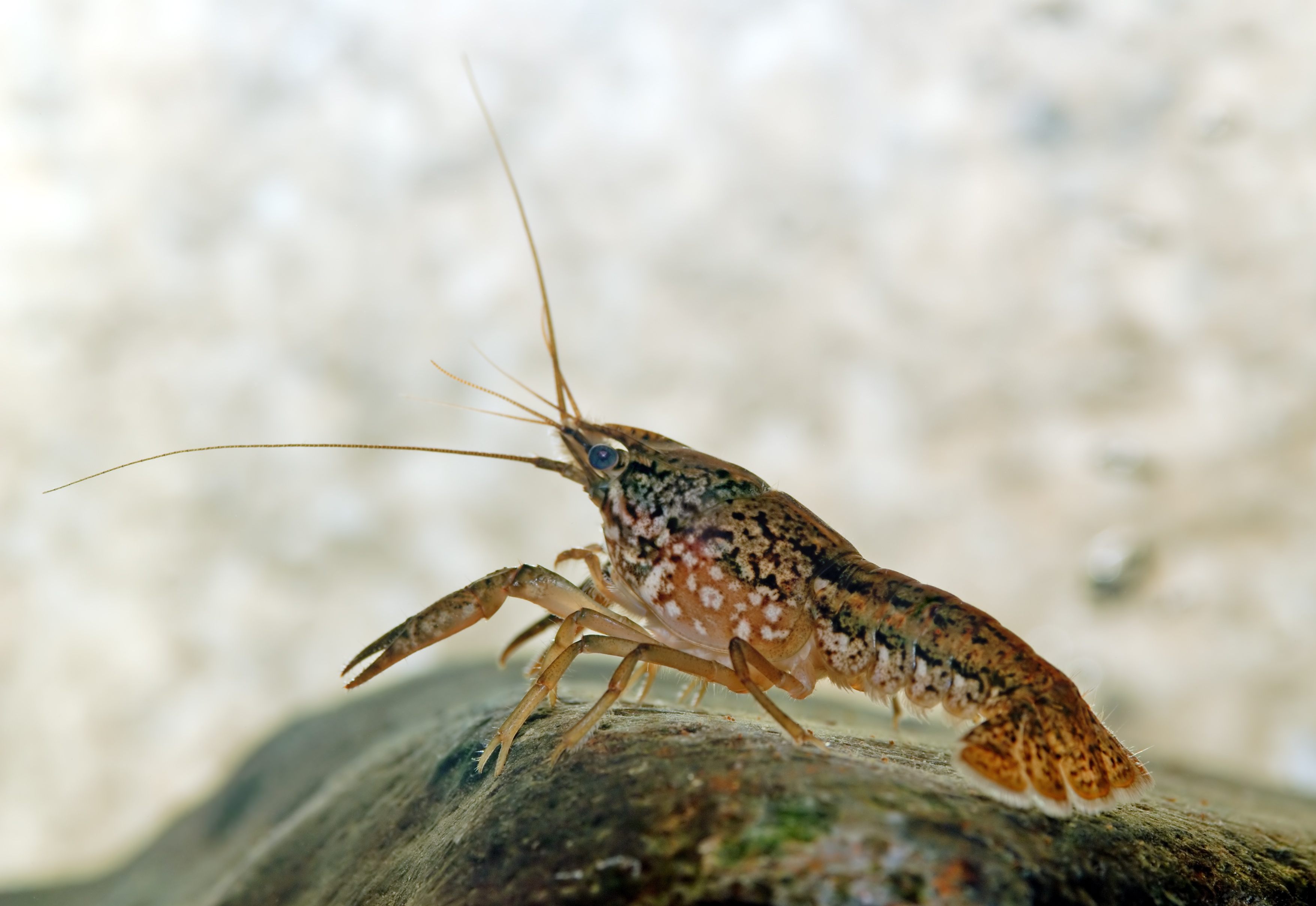The Mutant, All-Female Crayfish That Reproduce by Cloning Themselves
A horror film made real.

The marbled crayfish looks much like any other freshwater crustacean. It has two claws, ten legs, and an attractive blue-brown marbled shell. Yet this six-inch creature, found in streams and lakes around the world, represents far more sinister possibilities than you might expect. Its new scientific name gives a few clues: Procambarus virginalis. Every marbled crayfish is female—and they reproduce by cloning themselves.
Frank Lyko, a biologist at the German Cancer Research Center, first heard about the marbled crayfish from a hobbyist aquarium owner, who picked up some “Texas crayfish” at a pet shop in 1995. They were strikingly large, and they laid enormous batches of eggs—hundreds, in a single go. Soon, the New York Times reports, the hobbyist was beset with so many crayfish he was giving them away to his friends. And soon after that, the marmorkrebs, as they are known in German, were showing up in pet stores in Europe.
There was something very strange about these crayfish. They were all female, and they all laid hundreds of eggs without mating. These eggs, in turn, hatched into hundreds more females—with each one growing up fully able to reproduce by herself. In 2003, scientists sequenced their DNA and confirmed what many owners already believed to be the case: Each baby crayfish was a clone of its mother, and they were filling Europe’s fishtanks at alarming speed. “People would start out with a single animal, and a year later they would have a couple hundred,” Lyko told the Times.
Just 25 years ago, the marbled crayfish did not exist at all. Now, they can be found in the wild by the millions in Germany, Czechia, Hungary, Croatia, Ukraine, Japan, and Madagascar.
Online advice to marmorkreb owners is clear: They breed like bunnies. “While a 10 gallon [aquarium] is fine for a couple of months,” one site cautions, “that 10 gallon is going to get smaller and smaller as these animals reproduce. … A good rule of thumb is—the bigger the colony, the bigger the tank. Start with at least a 40 gallon and go bigger if you can afford it.” Hobbyists have discovered this truth to their cost, leading many to dump their extra pets in lakes and streams.
Whatever the conditions, the crayfish thrive. Marmorkrebs, it turns out, are as hardy as they are prolific. And when there are too many of them in a water body, they simply relocate. The Times reports that they will walk hundreds of yards to find new lakes or streams, where a single specimen can produce an entire population.
Over the past five years, Lyko and his colleagues have sequenced the genome of the marbled crayfish, publishing their findings this week in the journal Nature Ecology & Evolution. The crayfish seem to be the result of a single drastic mutation in a slough crayfish, native to the Satilla River in Florida and Georgia. Around three decades ago, two slough crayfish mated. In normal reproduction, each sex cell has a single copy of each chromosome. But there was something awry with one of these initial two crayfish—a mutation that left it with two copies in its sex cell. Somehow, the offspring was hardy and in perfect condition. Incredibly, it had three copies of each chromosome, and the ability to reproduce asexually, without requiring any input from a male.
So, will an army of female marbled crayfish clones take over the earth? It depends, Lyko told the Times. “Maybe they just survive for 100,000 years. That would be a long time for me personally, but in evolution it would just be a blip on the radar.” There are advantages and disadvantages to their asexual reproduction, he said. Population growth is explosive, with a single specimen able to produce hundreds of fertile offspring. But they are vulnerable, too. With no genetic variation, if a disease can bring down one clone, all the others are as likely to be obliterated. How long it takes for such a pathogen to come along, however, is a mystery. In the meantime, across the globe, the crayfish are making themselves at home.

















Follow us on Twitter to get the latest on the world's hidden wonders.
Like us on Facebook to get the latest on the world's hidden wonders.
Follow us on Twitter Like us on Facebook